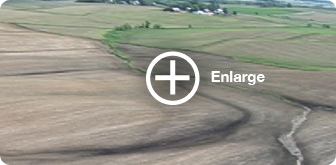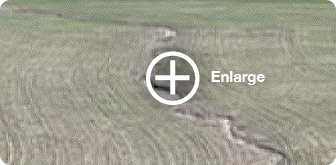AFTERMATH OF A STORM – Page 1
On May 27, 2010, EWG staff and a cameraman climbed into a helicopter in Ames, Iowa, to look for signs of soil erosion and water runoff caused by a rainstorm two days earlier. We didn’t have to fly far or long to find them. Everywhere we looked, recently planted fields of corn and soybeans were etched with dark gullies. Indeed, this telltale signature of erosion and runoff was evident even before we got to our original destination — an area of Marshall County (just 40 miles east of Ames) where rain had fallen two days earlier.
The May 25 rainstorm was not unusually heavy for Iowa in the spring. According to rainfall data collected by the Iowa Environmental Mesonet, the rainfall that day ranged from 0.25 to 1.65 inches in the area surveyed.9 A heavier storm two weeks earlier (May 12) produced an average of 1.45 to 1.93 inches in the area and may also have contributed to the obvious signs of erosion, runoff and gullying.
Figure 5: EWG’s Aerial Survey
Storms that produce two inches or more of rain are common. Six occurred somewhere in Iowa in April of 2010, three in May, 14 in June, 15 in July, 10 in August, six in September, one in October and one in November. The year 2010 proved to be a stormy one, with serious consequences for Iowa’s soil and water resources and for its citizens, whose lives and property have been repeatedly threatened by flooding. The heaviest downpours occurred after EWG’s May 27 aerial survey.
What we saw was very disturbing:
Figure 6: Gullies Everywhere

 Twitter Updates
Twitter Updates






